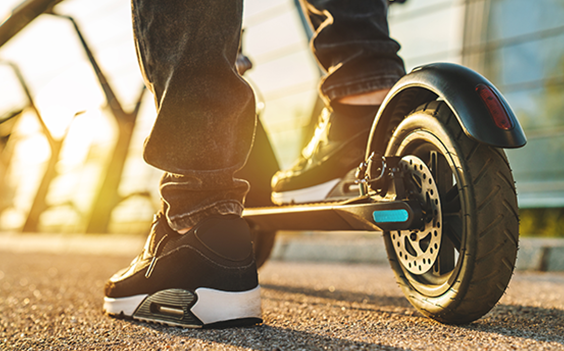
Electric bicycles, or E-bikes, have revolutionized the way we commute and experience cycling. With various riding modes available, it's essential to understand the key differences between the Pedal Assist System (P.A.S) and throttle riding modes. In this article, we'll delve into the characteristics, benefits, and considerations of each mode to help you make an informed decision when choosing the right E-bike for your needs.
- P.A.S E-Bike Riding Mode: The Pedal Assist System, or P.A.S, is a popular riding mode in E-bikes. Here's how it works:
- Sensor Technology: P.A.S utilizes sensors that detect the rider's pedaling motion, speed, and force applied to the pedals.
- Assistance Level Control: Based on the sensor inputs, the E-bike's motor provides assistance in proportion to the rider's pedaling effort.
- Natural Riding Experience: P.A.S mode aims to simulate a natural cycling experience, where the motor amplifies the rider's pedaling power, making pedaling easier and more efficient.
- Multiple Assistance Levels: P.A.S often offers multiple levels of assistance that riders can adjust to match their desired intensity or conserve battery power.
- Health and Fitness Benefits: P.A.S encourages physical activity and can be beneficial for fitness enthusiasts or riders looking for an active cycling experience.
- Throttle E-Bike Riding Mode: The throttle riding mode provides a different riding experience and functionality:
- Twist or Thumb Throttle: Throttle-controlled E-bikes feature a twist or thumb-operated throttle mechanism that activates the motor without the need for pedaling.
- Instant Power: With a throttle, riders can enjoy instant electric power and acceleration by simply engaging the throttle.
- No Pedaling Required: Throttle mode allows riders to ride the E-bike without pedaling, making it ideal for riders who may need assistance due to physical limitations or for effortless cruising.
- Control and Convenience: Throttle mode offers greater control over the amount of power delivered by the motor, allowing riders to easily adjust the speed and acceleration.
- Suitable for Various Riding Scenarios: Throttle mode is well-suited for situations where immediate power is needed, such as tackling steep hills, starting from a standstill, or navigating through crowded areas.
Considerations When Choosing:
- Riding Style and Preference: Consider your preferred riding style, whether you enjoy pedaling actively or prefer a more laid-back, effortless riding experience.
- Fitness and Exercise Goals: If you want to actively engage in pedaling and reap fitness benefits, P.A.S mode might be a better fit. However, if you require assistance without physical exertion, a throttle-controlled E-bike can be a suitable choice.
- Local Regulations: Check local laws and regulations regarding E-bikes, as some jurisdictions may have specific restrictions or requirements for throttle-controlled E-bikes.
Conclusion: Understanding the distinctions between the P.A.S and throttle riding modes is essential when choosing an E-bike that aligns with your riding preferences and requirements. Whether you prioritize an authentic pedaling experience with assistance or seek immediate power at the twist of a throttle, the right choice ultimately depends on your personal needs, fitness goals, and local regulations. With a wide range of E-bikes available, you can find the perfect ride that complements your style and enhances your cycling adventures.
Please ensure that you operate your electric bike/scooter within all UK laws. Electric bikes with throttle (over 15.5MPH and 250WATT) are not to be used on footpaths, cycle lanes, or roads.
Customers assume all liability and risk associated with e-bike use and holds bsmart electric.com, bsmart technology Ltd and its owners free from any liability caused by their use.


